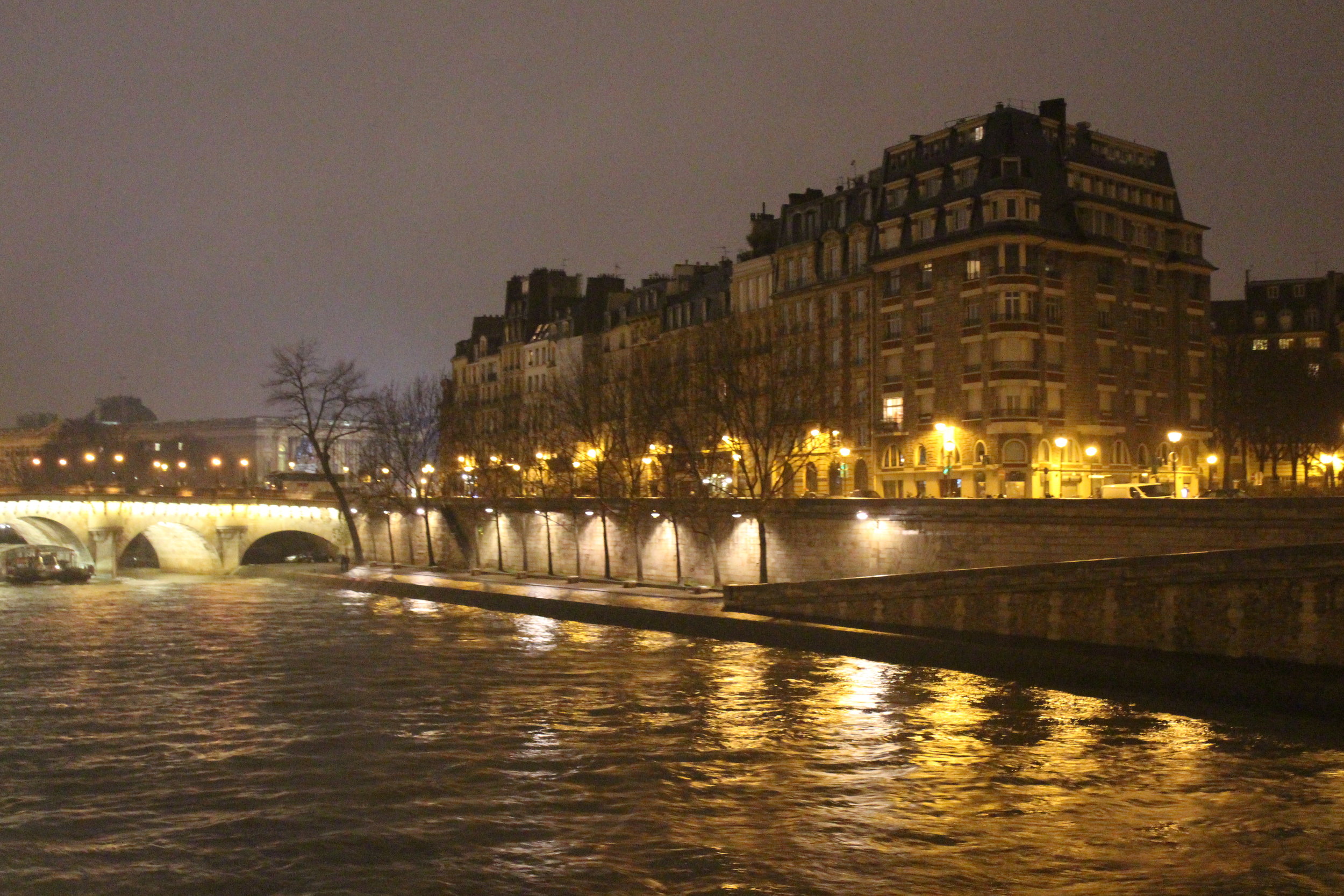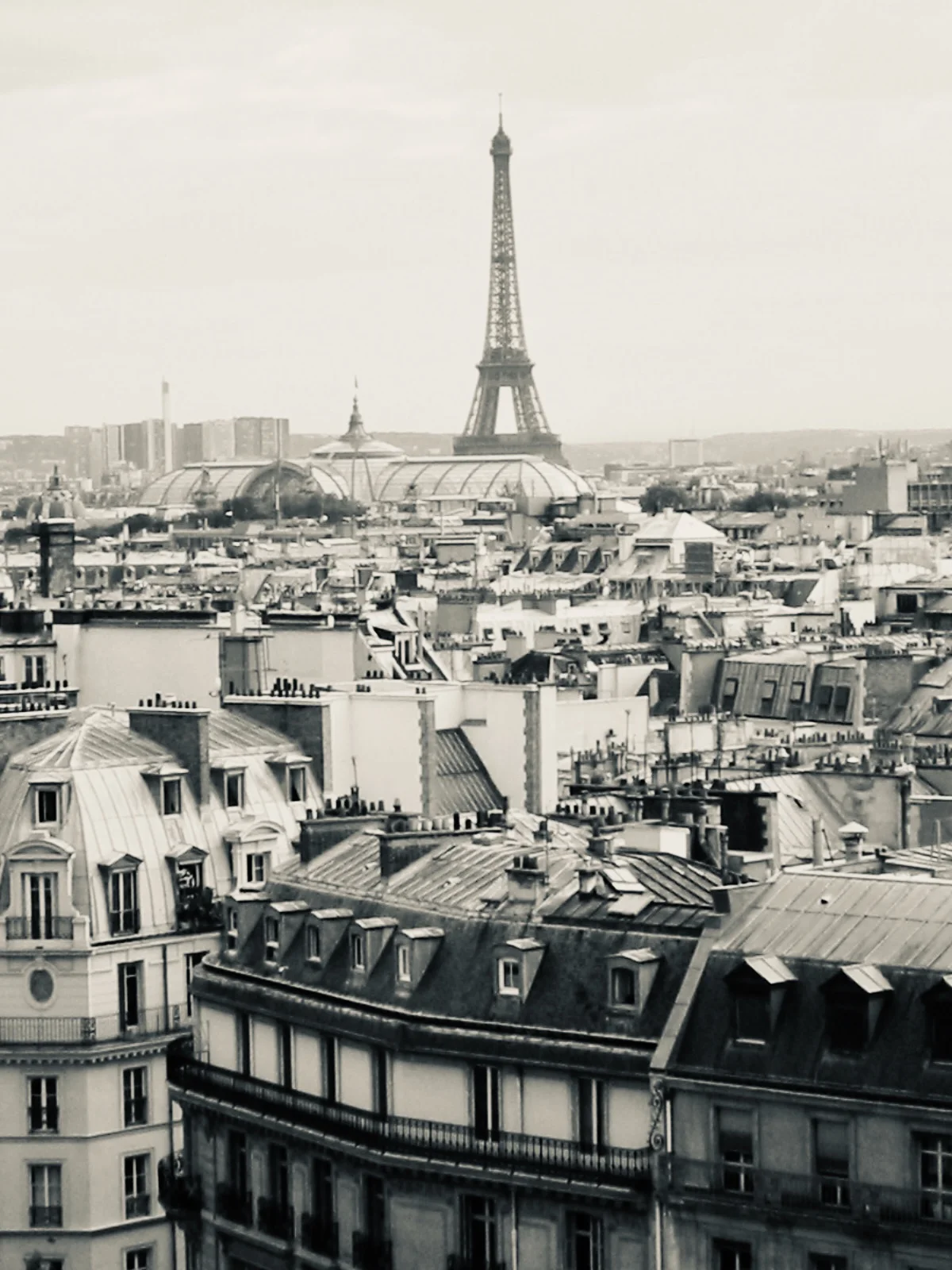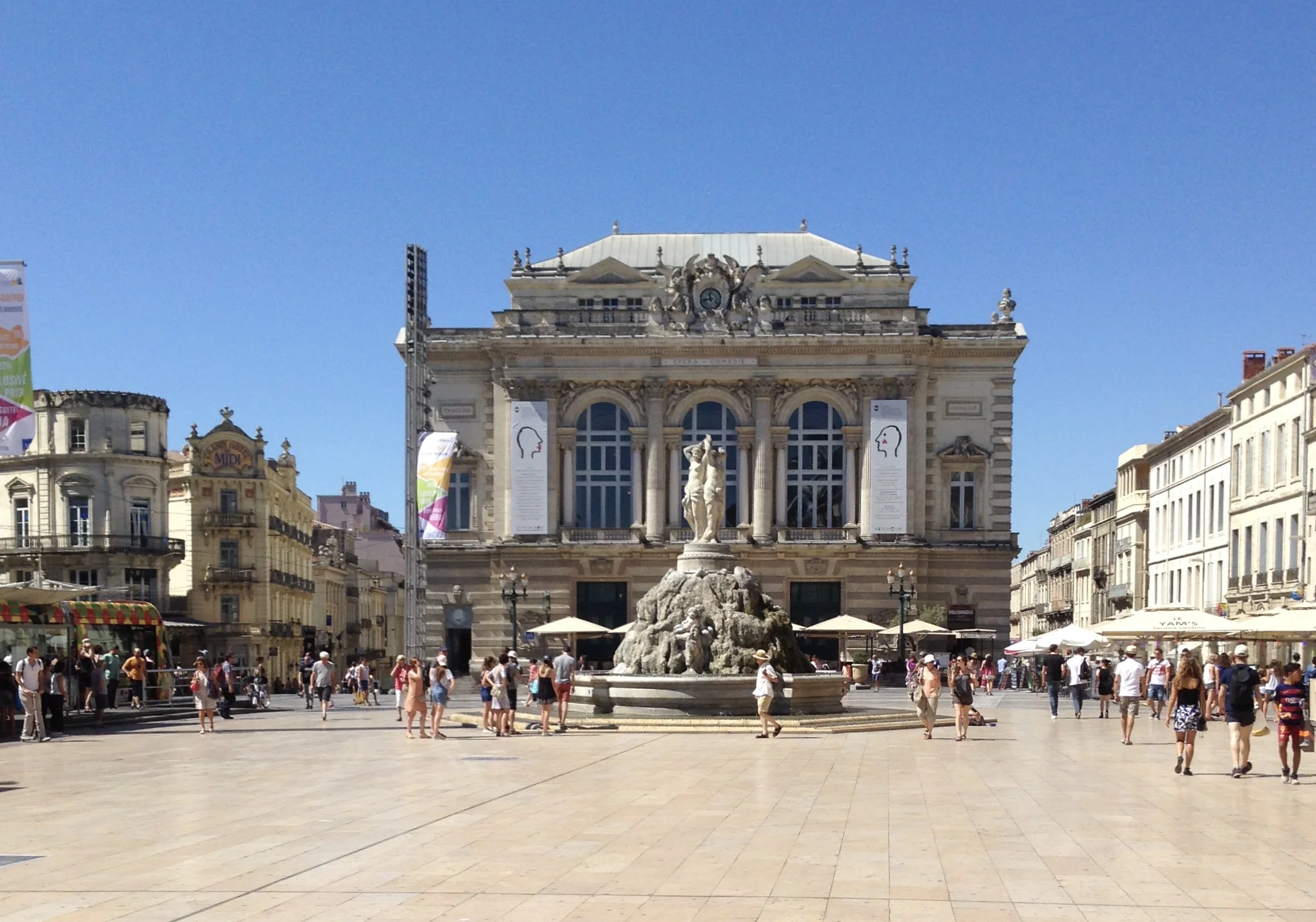How To Optimize Your Vacation In Paris
It’s hard to imagine a more romantic city than Paris. The city beams with light, smells of fresh pastry, and invites you to sit and sip a coffee while watching Parisians model the latest fashions. With a bit of direction, it is possible to see and experience Paris in as few as three days.
Pont de l'archevêché or the “Love Lock bridge”
““When good Americans die, they go to Paris.” – Oscar Wilde”
My love affair with Paris started at an early age. We studied geography and global history in elementary school and I couldn’t help but wonder why my family never traveled beyond east coast camping trips. There was so much to visit. I’ve always desired to see more of the world and wondered what adventures awaited. In high school, a friend brought back an Eiffel Tower souvenir and the desire to travel intensified. It would take another fifteen years and the prompting of my older cousin, who was in the State Department, to disconnect from the routine we had created and finally start to see the world. I will forever be grateful to Roger for his guidance and kindness. In 2005, we finally traveled to Paris. It was our first international destination. Since then we have made six visits to this amazing city. We hope we can share just a few of the things we learned and inspire you to travel.
As this may be your first trip to Paris, I’m going to cover the essentials. If you have more time, the route can be modified. All the photos on this page are our own taken with an Iphone or a Sony point and shoot. Nothing fancy and much less to pack!
Eiffel Tower from a Seine River cruise.
Paris, better known as the City of Light, has captured the imagination of travelers from around the world. From the beauty of its historic architecture to the vibrant art and fashion scene, Paris has become synonymous with style, culture, and gastronomy.
Some trivial facts:
Paris has Twenty arrondissments or neighborhoods; each having it’s own distinct character.
You can walk across the whole city in just 2 hours. It’s a pretty large city with many residents, but it’s very compact within the city limits. We’re going to focus on walking the city in this blog post.
Every Parisian will tell you that the metro is the best way for you to get around the city unless you like to walk. Taxis are too few, the streets are narrow so cars are not advised, and there are not enough parking. The Metro is a huge network that was built in the 1900s and today it’s the 4th largest public transportation system in the world.
Dogs are truly man’s best friends, but in Paris this is taken to a new level. It is not uncommon for a well behaved pooch to be seen in the finest of restaurants.
There’s so much hiding below the surface of this spectacular city that it’s hard to know where to start. Read up on some of the history and sights of the city before you head off on your visit, even if your trip to Paris is only an imagined one as mine was for many years. I highly recommend The Green Guide: Paris from Michelin Travel Publications. It’s fairly compact and gives a great overview of the many sights. Additionally, if your anything like me, you love maps. For this reason, I would recommend you get a copy of Knopf Mapguides Paris edition. This little book has ten flip open maps with a variety of recommendations included. There are many great apps today, including one I have myself; Ulmon City Maps to Go; which is very helpful.
Paris may be the most visited city in the world, but some French people feel that the culture of this cosmopolitan city is really its own, separate and distinct from the rest of French culture. I would agree. Parisians represent the culture of France, as much as, New “Yawkas” represent the culture of America.
Be aware that Charles De Gaulle airport is about an hour from downtown Paris and can be expensive to get there.
If at all possible, for your first trip, I’d recommend a company called Blacklane. They offer fixed rates and a really great worry-free service. It is pricey; about 150 USD for a one way from the airport, but takes all the anxiety out of getting to the heart of the city.
A taxi or an UBER can cost you approximately 60+ USD with additional tip. There are other shared shuttle services that can be booked online, but we’ve never used them.
If you’re at all comfortable taking public transit, the RER Line B (Blue Line) is the fastest, cheapest and most convenient way to get from Charles de Gaule Airport to the center of Paris. It will cost you about €10.50. The RER Line B connects CDG with the Paris city center. RER B (blue line) leaves from Terminal 2 or Terminal 3 in CDG. There are two stations: Aeroport Charles de Gaule 1, which is located near Terminal 3 in the Roissypole building, and Aeroport Charles de Gaule 2, which is located between Terminal 2E and 2C. The RER B from CDG drops you at St. Michel/Notre Dame within walking distance of the famous cathedral and the oldest part of the city (Ile de la Cite) as well as our recommended Hotel du Vieux.
CAUTION: We traveled with medium sized carry-on backpacks. If you brought your entire wardrobe, consider a different option. Michele is currently working on a blog regarding what we pack for our trips.
BE AWARE!! As in any other city, Paris has its’ problems and travelers should always be aware of their surroundings. Whenever in crowds, keep a keen eye open for pick-pockets. It is the most common criminal activity you may encounter in Paris.
Hotel du Levant
Our recommendation is that you stay in or around the Latin Quarter/St. Germaine near Notre Dame (which is located on Ile de la Cite) and close to the La Siene River. It is convenient to all the sights and amazing to view at night. We really love quaint boutique hotels and on our stays in Paris , it is one of two choices. I would consider others, but I only wanted to recommend ones we have stayed at.
Relais Hotel du Vieux
Hotel Du Levant.
Hotel du Vieux is our absolute favorite. We have stayed there a few times and it never disappoints. It is truly a Parisian experience and is near one of our favorite restaurants, Michelin rated Ze Kitchen Galerie. Additionally, there is a grocery store close by. I’ll save our recommended restaurants and hotels for another blog post. Each really deserves a full explanation.
Yes…it’s 8.3 miles, but your in Paris!! You’ll probably be able to do 15!! Source: Google Maps
Day One: Get some exercise and soak in Parisian Life.
Starting at Pont Nuef Bridge walk west along the La Siene river. You will be on the Quai de Conti. Your first destination will be the Musee d’Orsay. (20 minute walk) . Tickets are required and can be obtained from the front desk of the Hotel du Vieux. I’m pretty sure they offered Louvre tickets as well. Spend a couple hours at the Orsay Museum and be sure to visit the book store for the insta-worthy shot of the clock. It is an absolute must see.
From the Musee D’Orsay you’ll be heading west once again towards the Eiffel Tower. Stroll the backstreets along the way. It’s a beautiful neighborhood. Stop at a patisserie or a boulangerie. Grab a coffee, sit and watch. As a side note, eating food and walking is considered a bit rude. Parisians will roll their eyes at you. On your way to the Eiffel Tower I would suggest making a stop at the Hotel Des Invalides before continuing to Parc du Champ Mars where you will get the full view of the Eiffel Tower. If you plan on going to the top, do buy your tickets well in advance as the ques are excessively long and may even sell out.
Head under the Eiffel Tower and walk up the hill to Place du Trocadero. You’ll get amazing views of the tower. (35 minute walk from the d’Orsay)
From the Trocadero head northeast to the Arc De Triomphe along Av. Kleber. You’ll run right into it. The Arc is definitely one of the most recognizable monuments in Paris. It was commissioned in 1806 after the victory at Austerlitz by Napolean at the height of his reign. It took 30 years to construct.
After the Arc de Triomphe walk down the Avenue Des Champs-Elysees. During Christmas season, the streets are lined with stalls selling mulled wine, crepes and all sorts of trinkets. This is a high end shopping district where you can see all the latest fashion.
At the end of the Champs-Elysees you will see the Rue Royale on your left. At the Place de la Concorde leading past the American Embassy up to the Madeleine. The classic Greek architectural marvel that is the Madeleine Church , was designed in its present form as a temple to the glory of Napoleon's Army. A short walk around the back , you will find the famous Printemps Department store. During the Christmas holiday, be sure to check out their windows that rival those seen in Manhattan.
Head back to the Place de la Concorde and turn left. You will then be in the famous Jardins des Tuileries. Here you can walk among the many tourists and street artists before seeing the famous pyramid at the Louvre Museum. There are two ways to see the Louvre. Early in the morning, when all the tourists run to see the Mona Lisa. It’s quite the spectacle! Or, you can get your tickets in advance and plan to spend an afternoon perusing the vast amount of artwork. I’d suggest 3pm on Tuesday or a Friday. The museum closes at 6, so be sure to pace yourself. In a later blog, I may try to advise on which art is most worth seeing. I’ll catch a bit of flak for that because art is quite personal. You could literally spend two eight hour days here. It may just whet your appetite for a return visit.
After leaving the Louvre, head back to Pont Neuf Bridge and take the stairs down to Pont Neuf where there is a ticket counter for the Siene River Cruise. Bring cash as they don’t accept credit cards. By this time, it may be twilight or early evening. It is in our opinion the BEST time to see Paris by the river.
Obviously, I love to walk and this itinerary is not for everyone. There is plenty of mass transit in Paris, if you need it, and it’s super easy to navigate. Additionally, there is a hop-on hop-off bus tour that operates near all the major attractions. I also didn’t mention specific restaurants, that’s another blog as well. However, explore, find a small restaurant and try out your French!! Je voudrais ce platt (I would like this plate), sil vous plait (please), merci (thank you). The French will appreciate your effort.
Musee d’Orsay Clock
Printemps Department store
Source: Google Maps
Day Two: Let’s get going!!
After all the walking you did yesterday, I think you deserve what the French call a “La grasse matinée” or fat morning. This is the term the French use for being lazy and not getting up too early. Relax and enjoy breakfast before heading out to see the sights.
Your first stop is Sainte-Chappelle on the Ile de la Cite. Make sure you get tickets in advance. Ask your concierge or purchase online in advance. It is an absolute must see. Sainte-Chapelle was commissioned by King Louis IX to house his large collection of ‘Passion Relics’, and was built between 1239 and 1248. The huge stained glass windows are the defining characteristic of this upper section, and they depict scenes from the Old and New Testaments, as well as ,the journey of the Passion Relics to Sainte-Chapelle. It is amazing. Spend about an hour marveling at the glass. It’s best to go on a sunny day as the glass just dazzles.
Basically next door to Sainte-Chappelle is the Conciergerie. OK; here it goes. I’m going to get all history nerd on you…….as I do have a undergraduate degree in history. In 1792, after the fall of the monarchy, during the French Revolution, the court called the Revolutionary Tribunal was installed here that contested the opponents of the Revolution. It was also during the Revolution that the building began to transform into the main prison for political and common criminals. The wealthiest prisoners, were given the best rooms, while the underprivileged criminals stayed in the dark and cold underground cellars. During the two years that followed, more than 2700 people were sentenced to death, and lived their last moments at the Conciergerie. Of all these residents, non is more famous than the Queen at the time; Marie-Antoinette. She was sentenced to death by guillotine on October 16th 1793. “She could no longer eat cake,” history joke; just ignore me.
Your next stop is another church about a block away. Notre Dame, ever heard of it? All kidding aside, since the fire you can no longer go inside. It really makes me sick to think that it accidentally burned. However, you can still walk around the exterior and marvel at the stone architecture. When you’re wandering around the Île de la Cité, admiring Notre-Dame Cathedral or crossing Pont Neuf, take a look around and try to imagine what it must have been like in 53 BC when Roman troops first joined the Celtic settlers living on the tiny island.
From there, I would suggest walking behind Notre Dame and visiting the Pont de l'archevêché, otherwise known as the Love Lock Bridge. Unfortunately, the city removed all the locks due to concerns of bridge collapse under all that excess weight. It’s still a beautiful place to profess your love.
Head north across the Pont St. Louis and the Pont Louis Philippe. You are now entering Le Marais., your first stop will be the Place des Vosges.. This former royal palace has beautiful architecture and a wonderful garden to people watch. Do stop by No. 6, which was Victor Hugo’s residence. (Author of Les Miserables and the Hunchback of Notre Dame) You can go on a tour of the museum for a small fee.
Next head north west to the Hotel Soubise. This is actually the National Archive Museum and is often overlooked by tourists. It’s a great place to learn about French History or just sit and soak up the sun.
From Hotel Soubise head west to the Centre Georges-Pompidou. It is a very modern designed building which houses the Musee National d’Art Moderne. Go to the top floor for some of the best views in Paris.
Head south along Rue Du Renard. You will basically run into the Hotel De Ville. The architecture is truly amazing and during the winter, it is the location of a public skating rink. You are very close to your hotel. Relax and enjoy the atmosphere.
If you have extra time and ambition, I would suggest a visit to the Luxembourg Gardens and the Pantheon.
Hôtel de Soubise
Source: Google Maps
Day Three: And away we go!!
This is one of the few times that I might recommend taking the Metro to save a bit of time. Take a 20 minute walk along the Siene River to the Assemblée Nationale (Paris Métro) Station. It’s one of the city hubs. Buy your tickets and get on Line 12. Your first stop is Places des Abbesses , where you get off the Metro; at station Abbesses . As you come above ground notice one of the last surviving Art Nouveau Metro station entrances that was designed by Hector Guimard.
From there walk uphill on Rue des Abbesses (opposite the traffic direction) to take in the Montmartre village atmosphere. You'll notice that this part of the neighborhood is not jammed with tourists. Stop in one of the boulangeries along Rue des Abbesses for a freshly baked baguette or a mouthwatering pain chocolaté.
After absorbing some real life in real Montmartre, continue up Rue des Abbesses and then take Rue Lepic uphill (it forks off the the right). Wind your way through the old village streets and historic cabarets (and more tourists!) until you reach Place du Tertre, which was an artist’ hang out in Picasso's day.
Follow the curves of Rue Lepic , up the hill and you'll end up Sacre Coeur, the big white church on the hill. Walk around to the front of the church for some of the best views of Paris.
Retrace your steps and take the Metro back to Assemblée Nationale (Paris Métro) on Line 12
If you have some time you can visit the Moulin Rouge for a picture of the windmill or head over to the cemetery to view the resting place of notable people such as Dumas, Degas and Sax. (Charlie D, the last one is for you)
““We’ll always have Paris.” – Howard Koch”
The Basilica of Sacré-Cœur, Montmartre
There will be disagreement about what to see, but I think this itinerary will give you a great taste of Paris. Figure out what you like and visit again!! Paris shouldn’t be a “once in a lifetime” trip!!
Why read this article?
"Things to do in Paris"
"Paris landmarks"
"Best restaurants in Paris"
"Paris travel tips"
“Paris Attractions























